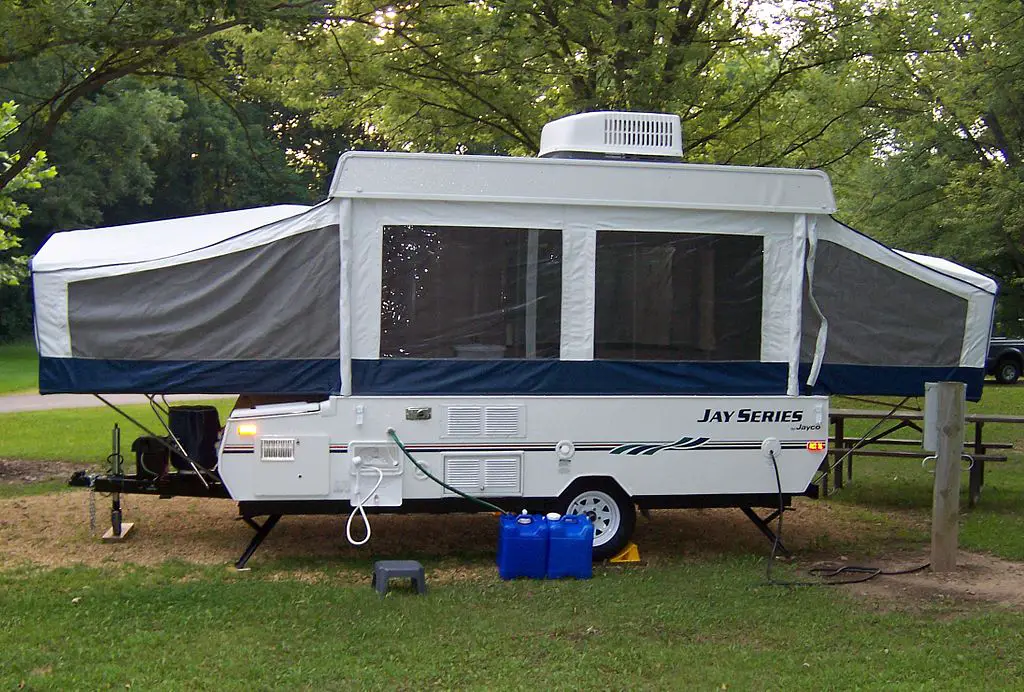Pop-up campers provide a convenient and cost-effective way to enjoy the great outdoors, offering a comfortable camping experience with the flexibility of towing behind your vehicle. However, one of the most common challenges faced by pop-up camper owners is water damage. Whether due to unexpected leaks, storms, or improper storage, water damage can wreak havoc on these compact mobile homes, leading to a host of issues that need to be addressed. In this comprehensive guide, we will explore the multifaceted topic of pop-up camper water damage, offering insights into how to assess the extent of the damage, what components may need replacement, and essential strategies for restoration. Whether you’re a seasoned camper or new to the world of pop-up campers, understanding how to deal with water damage is crucial to ensure the longevity and safety of your camping adventures.
Table of Contents
Assessing the Extent of Damage
Assessing the extent of water damage in a pop-up camper is the crucial first step in the process of recovery and restoration. It’s essential to thoroughly evaluate the damage to determine the scope of the problem, as this will guide your subsequent actions. Begin by inspecting the interior and exterior of the camper. Check for visible signs of water intrusion such as water stains, warping, or bubbling on walls, floors, and ceilings. Pay special attention to corners, seams, and the areas around windows, vents, and doors, as these are common entry points for moisture. It’s important to remember that water can travel within the camper’s structure, so a small stain on the ceiling might conceal more extensive damage within the walls or roof.
Beyond the visible signs, it’s essential to use a moisture meter to detect hidden moisture levels in structural elements like wood and insulation. High moisture readings may indicate more extensive damage that isn’t immediately visible. By thoroughly assessing both the seen and unseen damage, you’ll have a clearer picture of the repairs needed, and you can make informed decisions about what components require replacement and what can be salvaged. In the next sections of this guide, we will delve into the specific components and areas to focus on when replacing or repairing water-damaged elements in your pop-up camper.
Replacing Flooring and Subfloor
Replacing flooring and subflooring in a water-damaged pop-up camper is often a labor-intensive but essential task. These components are particularly vulnerable to water damage, as they can absorb moisture and lead to structural issues and the development of mold and mildew. Start by removing the existing flooring, which typically consists of vinyl or laminate. Carefully detach any fixtures, cabinets, or furniture that may obstruct the removal process. Once the old flooring is removed, you can assess the subfloor’s condition. Water-damaged subfloor may be soft, warped, or discolored, indicating the need for replacement. If the damage is localized, you might only need to replace specific sections, but extensive damage may require a full subfloor replacement.
When replacing the subfloor, it’s crucial to choose materials that are resistant to moisture and durable. Marine-grade plywood or pressure-treated plywood are often recommended choices, as they are designed to withstand exposure to moisture and provide long-lasting support for your camper. Properly seal and waterproof the subfloor to prevent future water intrusion, and then proceed with installing new flooring materials. This process can significantly improve the overall structural integrity of your pop-up camper and ensure a safe and comfortable camping experience.
Mold and Mildew Remediation
Mold and mildew remediation in a pop-up camper is a comprehensive process that should also include the cleaning and assessment of items like the RV mattress. Due to their porous nature, mattresses are particularly susceptible to mold and mildew growth if exposed to moisture. If you suspect your RV mattress has been affected, remove it from the camper and inspect it for any visible signs of mold or mildew. To address this issue, start by taking the mattress outdoors on a sunny day to allow it to air out and help kill some of the mold spores naturally. Be sure to flip and rotate the mattress to ensure all sides receive sunlight and fresh air.
Afterward, thoroughly vacuum the mattress to remove loose mold spores and debris. Depending on the mattress’s material and the extent of the damage, you might need to consider professional cleaning or replacement if the issue persists. Ensure your replacement rv mattress is of a high-quality, hypoallergenic material to minimize the risk of future mold growth. Additionally, when storing the mattress, always keep it in a dry and well-ventilated area to prevent further issues with mold and mildew. Proper maintenance and vigilance are key to preserving the cleanliness and comfort of your sleeping area in your pop-up camper.
Electrical and Wiring Concerns
Water damage in a pop-up camper can have dire consequences for the electrical and wiring systems. These systems are sensitive to moisture and can pose safety risks if not properly addressed. If you suspect that water has infiltrated your camper’s electrical components, the first step is to ensure safety by disconnecting the power source to prevent electrical hazards. Following this, inspect the wiring, outlets, and electrical devices for any visible signs of corrosion, rust, or water damage. Make a detailed list of the affected areas and components.
Once the assessment is complete, consider replacing any damaged wiring or electrical components. It’s essential to consult with a professional electrician or a technician experienced in camper repairs, as dealing with electrical systems requires expertise and knowledge to ensure safety and compliance with codes. Properly seal any openings or breaches in the camper’s exterior that allowed water intrusion, and take preventive measures to safeguard the electrical system against future water damage. Maintaining the integrity of the electrical and wiring systems is vital to ensure the safety and functionality of your pop-up camper, so it’s a task best handled with care and precision.
Cabinetry and Interior Repairs
Cabinetry and interior fixtures within your pop-up camper can be severely affected by water damage, both aesthetically and structurally. When addressing these issues, start by assessing the extent of the damage. Inspect the cabinets, walls, and interior fixtures for signs of swelling, warping, discoloration, or peeling veneer. Water-damaged cabinetry can lose its structural integrity and aesthetic appeal. In some cases, repairs may be possible by reattaching or replacing veneer or applying a fresh finish, but extensive damage may require complete cabinet replacement.
Interior wall damage can be challenging, as it may involve removing and replacing drywall or paneling. Mold and mildew growth should be carefully addressed by following safe remediation practices, as discussed earlier. To prevent future water damage to your cabinetry and interior, take steps to improve the camper’s overall water-tightness. This includes resealing seams, seams around windows, doors, and roof vents, as well as maintaining proper ventilation and humidity control within the camper. A well-maintained interior not only enhances the appearance of your pop-up camper but also contributes to its overall comfort and functionality, making it an essential aspect of the restoration process.
In conclusion, water damage in a pop-up camper is a common challenge that can impact various components of your beloved mobile home, from flooring and electrical systems to cabinetry and interior fixtures. Addressing these issues requires a systematic approach, from assessing the extent of the damage to implementing the necessary repairs and preventive measures. Remember that safety is paramount when dealing with water damage, especially concerning mold and electrical systems. With patience and care, it is possible to restore your pop-up camper to its former glory and enjoy many more adventures in the great outdoors. Whether you’re a seasoned camper or a newcomer to the world of pop-up campers, this guide is designed to provide you with the knowledge and tools to tackle water damage issues effectively and ensure the longevity and comfort of your camping experiences.












